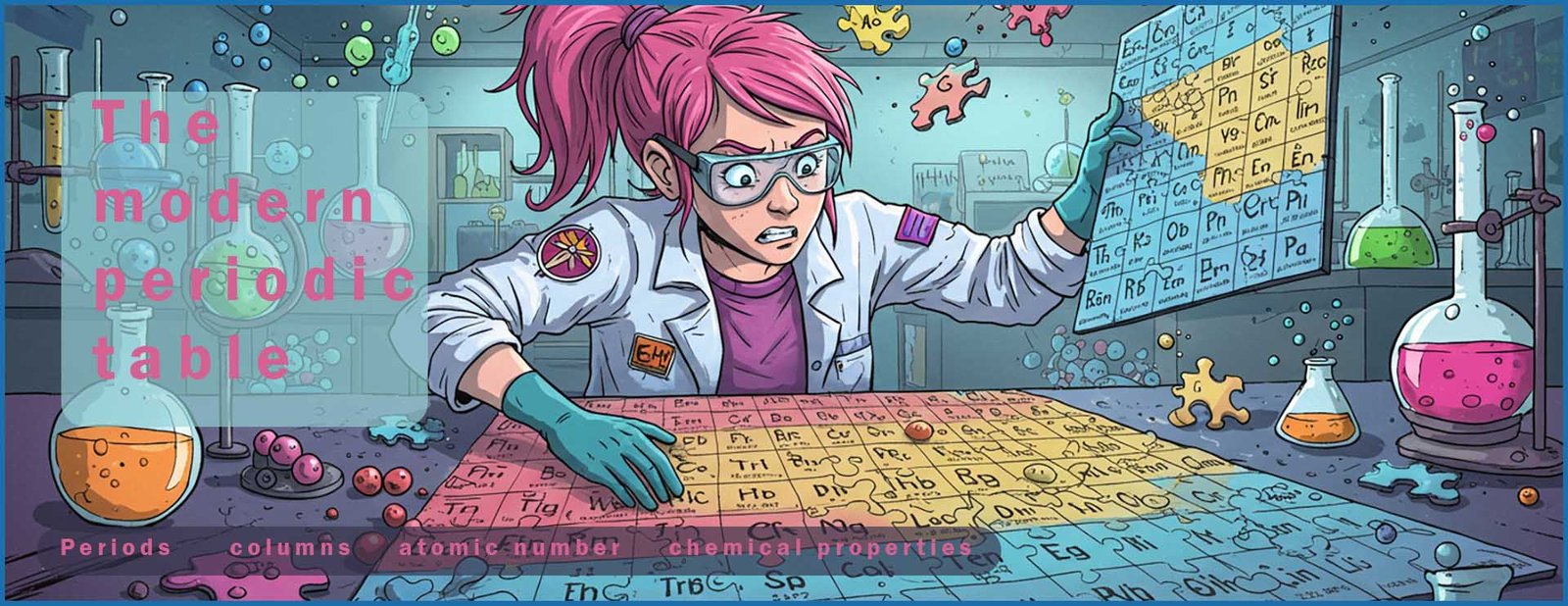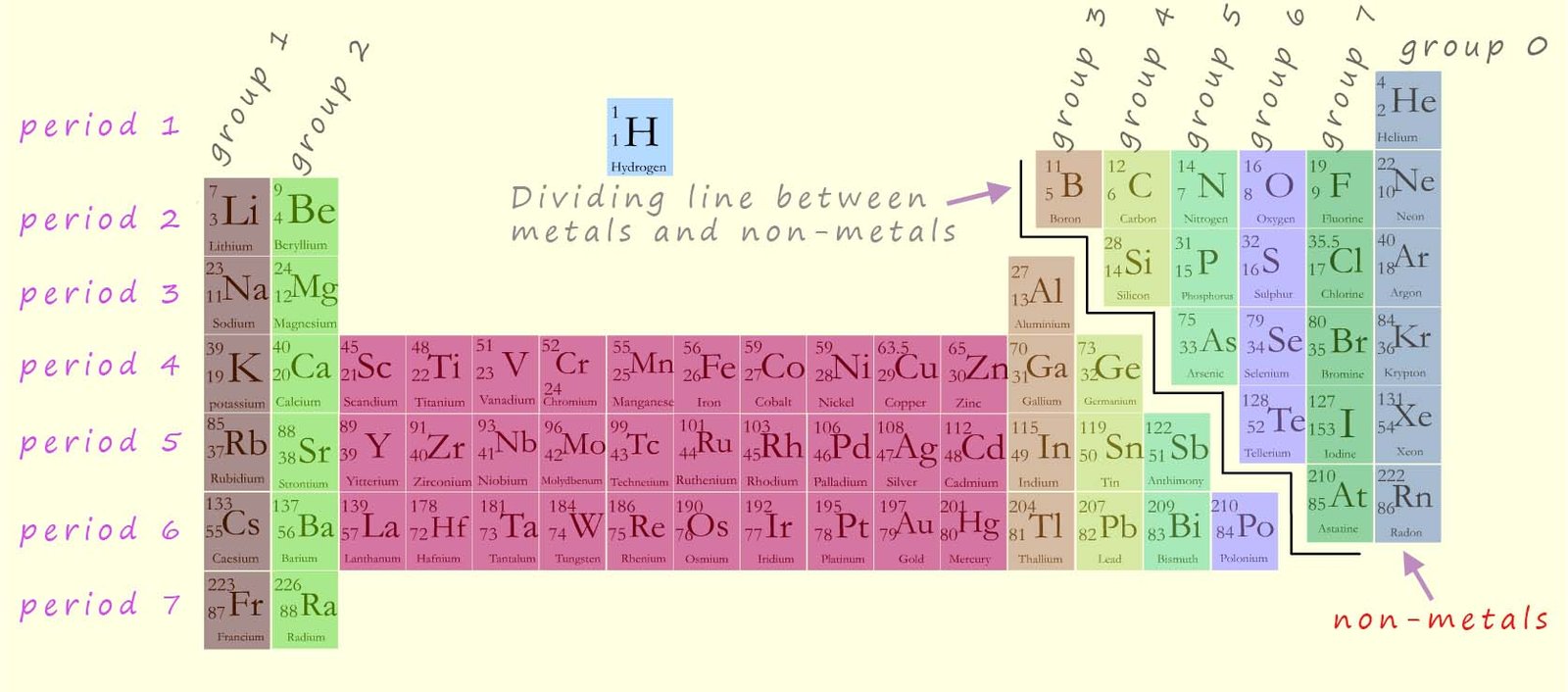

Higher and foundation tiers
Before reading this page you should already have gone through the webpage on the development of the periodic table and be familiar with the work of Dimitri Mendeleev.
Following the work of early chemists such as Dmitri Mendeleev great strides were made in the development
of a periodic table of elements. With the discovery of sub-atomic particles such as
electrons and protons
scientists began to understand the fundamental nature of atoms. The addition of an extra column to Mendeleev's early periodic
table with the discovery by the Scottish chemist William Ramsay of four Noble gases (neon, argon, krypton and xenon)
and the development of the Rutherford-Bohr model of the atom lead to the
idea that electronic arrangements were important in explaining the chemistry of the
elements and how they react.

Mendeleev arranged the elements
in his periodic table by their atomic mass but there were some nagging problems that he had
with some elements
in his periodic table; such as with the elements iodine and tellurium where he had to swap their positions in his periodic table
and break his own rule of arranging the elements
by their atomic masses. However it was not until well after
Mendeleev's death in 1907 following the work of the brilliant physicist Henry Moseley that an explanation for this problem was provided. Moseley bombarded certain
elements with "cathode rays" (high energy electrons)
and by analysing the frequencies
of the x-rays emitted
realised that the atomic number of an element was due to the number of
positive charges in the nucleus. This led to a reorganisation of the periodic table with
the elements now being arranged by their atomic number and not their atomic masses.
Following the discovery of isotopes in 1913 by the British chemist Frederick Soddy it became clear why Mendeleev had to swap around some elements in his periodic table; particularly the problem Mendeleev had with masses of the elements iodine and tellurium. If Mendeleev arranged these two elements according to their atomic masses then iodine and tellurium would have to swap places in the periodic table. Mendeleev swapped these two elements around in his table based on their chemical properties but he had no idea why they did not fit his pattern other than that the atomic masses may have been calculated wrongly.
Though it made sense to put iodine in group 7; the halogens since its chemical reactions were similar to the other halogens. However iodine has a mass of 127 and tellerium 128. Following the discovery of isotopes it was found that tellurium has several isotopes with high atomic masses and high percentage abundances which means its average atomic mass is higher than that of iodine.
The elements in the modern periodic table are arranged according to their atomic number. The image below shows the columns or groups and periods in the periodic table of elements.

The periodic table makes it easy to predict and explain many of the properties of the elements. You should be aware of the following facts:
Match the term below with the correct description by simply clicking on the term and then its correct description. Correct responses will turn the descriptions green!